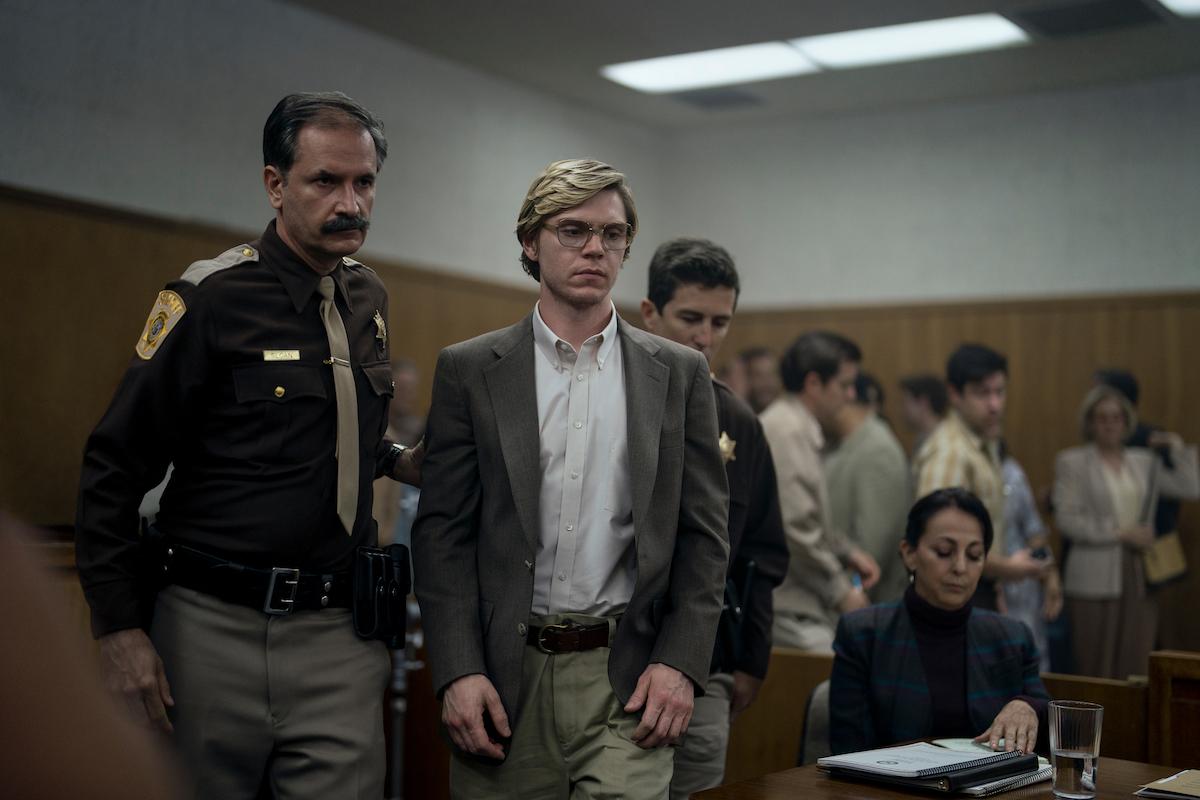Konerak Sinthasomphone: The Officers Who Sent Him Back To Dahmer
The tragic case of Konerak Sinthasomphone stands as a stark reminder of systemic failures within law enforcement and the justice system. It's a story that highlights not just the horrific acts of a serial killer, but also the devastating consequences when those sworn to protect and serve fail in their duties. The actions of the Milwaukee police officers involved, specifically Joseph Gabrish and John Balcerzak, in returning Konerak Sinthasomphone to Jeffrey Dahmer, have left an indelible stain on the city's history and continue to provoke questions about accountability, discrimination, and the pursuit of justice. This article delves into the details of that fateful night, the subsequent legal battles, and the lasting impact of a decision that cost a young life.
The name Konerak Sinthasomphone may not be widely known, but his story is one that deserves to be told. Konerak was a young boy whose life was tragically cut short when he crossed paths with notorious serial killer Jeffrey Dahmer. His case brought to light serious failures within the Milwaukee Police Department and justice system that enabled Dahmer to continue his killing spree, making the role of the Konerak Sinthasomphone police officers a critical point of focus in this harrowing narrative.
Table of Contents
- The Tragic Encounter: Konerak Sinthasomphone and the Milwaukee Police
- A Call for Help: The Scene on May 27, 1990
- The Deceptive Narrative: Jeffrey Dahmer's Manipulation
- The Return: A Fateful Decision
- The Aftermath: Konerak's Untimely Death
- Legal Repercussions: The Sinthasomphone Family's Fight for Justice
- Accountability and Consequences: The Officers' Fate
- Legacy and Lessons Learned: Preventing Future Tragedies
The Tragic Encounter: Konerak Sinthasomphone and the Milwaukee Police
The story of Konerak Sinthasomphone is inextricably linked with the broader saga of Jeffrey Dahmer's horrific crimes. On May 27, 1990, a day that would forever be etched in infamy, Milwaukee police officers responded to a call about a young male, Konerak Sinthasomphone, found naked and injured on the street. This initial encounter, and the subsequent actions of the Konerak Sinthasomphone police officers, set in motion a chain of events that led to unimaginable tragedy. Konerak, only 14 years old, had already been drugged and assaulted by Dahmer. Though he initially fled, he was disoriented once witnesses found him in the streets, a testament to the heinous acts he had already endured.A Call for Help: The Scene on May 27, 1990
The discovery of Konerak Sinthasomphone in such a vulnerable state immediately raised alarms for those who witnessed it. According to court documents from a suit the Sinthasomphone family filed against the City of Milwaukee and the two responding police officers, Konerak was seen wandering dazed and naked on the street. Concerned citizens, including Sandra Smith and Glenda Cleveland (the latter often mistakenly identified as the direct witness in some accounts, though it was her niece, Nicole Childress, and neighbor, Sandra Smith, who were at the scene), immediately recognized the gravity of the situation. They called the police, hoping for intervention and protection for the visibly distressed boy.Officers Gabrish and Balcerzak Arrive
In response to the urgent call, officers Joseph Gabrish and John Balcerzak arrived on the scene. They were joined by other emergency personnel, including Richard Porubcan and a fire department unit, indicating the serious nature of the initial report. However, the focus quickly shifted to the interaction between the Konerak Sinthasomphone police officers and Jeffrey Dahmer, who had followed Konerak outside.The Deceptive Narrative: Jeffrey Dahmer's Manipulation
Jeffrey Dahmer, notoriously known later as a serial killer, was present at the scene and immediately began to weave a deceptive narrative. He convinced the police he was Sinthasomphone's lover, claiming that Konerak was 19 years old and that their encounter was merely a domestic dispute, implying Konerak was intoxicated. Dahmer's calm demeanor and plausible (though false) explanation, coupled with the officers' apparent lack of critical assessment, proved tragically effective. The officers, including Gabrish and Balcerzak, seemingly accepted Dahmer's version of events without sufficient scrutiny, despite the clear signs of distress exhibited by Konerak.The Return: A Fateful Decision
Horrifyingly enough, because police officer John Balcerzak actually gave the boy back to Dahmer after he escaped, the outcome was sealed. John Balcerzak and Joseph Gabrish escorted Jeffrey Dahmer victim Konerak Sinthasomphone back into his apartment. This decision, made by the Konerak Sinthasomphone police officers, was the critical turning point that led directly to Konerak's death. It represented a profound failure to protect a vulnerable individual, despite clear warning signs.Witnesses' Pleas Ignored
The Sinthasomphone estate claimed in their lawsuit against the City of Milwaukee that Gabrish and Balcerzak deliberately refused to listen to Childress's and Smith's concerns about the boy. These concerned citizens repeatedly emphasized that Sinthasomphone was a child and that he was trying to escape from Dahmer. They pointed out that Dahmer had referred to Konerak as an adult, which contradicted Konerak's youthful appearance and their own assessment. The chief justice’s decision to send the case to trial reads, "rather, they allege, among other things, that the officers actively" ignored these pleas, suggesting a more active role in dismissing the witnesses' valid concerns. This alleged disregard for the witnesses' urgent warnings forms a central pillar of the accusations against the Konerak Sinthasomphone police officers.The Aftermath: Konerak's Untimely Death
Soon after the officers left, Dahmer then killed the boy. Dahmer confessed to the police after his eventual arrest in July 1991 that he strangled Konerak Sinthasomphone soon after the officers left. He likely was killed in the hours after the officers returned him to Dahmer's apartment. This tragic outcome underscored the catastrophic error made by the Konerak Sinthasomphone police officers. It also highlighted a horrifying detail: Jeffrey Dahmer killed Konerak Sinthasomphone while he was still on probation for molesting the victim's brother, Somsack, a chilling indication of prior warning signs that were not adequately addressed by the system. Anoukone Sinthasomphone, 27, the older brother of Konerak Sinthasomphone, 14, whose remains were among those of 11 males, later expressed the family's profound grief, stating, "it's very terrible."Legal Repercussions: The Sinthasomphone Family's Fight for Justice
The horrific circumstances surrounding Konerak's death, particularly the involvement of the police, sparked outrage and led to significant legal action. The estate of Konerak Sinthasomphone and his family filed a lawsuit claiming that the police officers and the City of Milwaukee violated their constitutional rights. This legal battle was a crucial step in seeking accountability for the systemic failures that allowed Dahmer to continue his murderous spree.The Lawsuit and Its Allegations
Konerak’s family filed a lawsuit against the City of Milwaukee and the police department claiming the officers discriminated against Konerak due to his race and sexual orientation. The core of the lawsuit against the Konerak Sinthasomphone police officers was the allegation that the officers' actions were not merely negligent but were influenced by discriminatory biases. The result of this chapter is that a jury trial would be held to sort out whether, on May 27, 1991 (though the incident was May 27, 1990, the legal proceedings extended), Konerak Sinthasomphone's right to the equal protection of the law was violated based on race, sex, and sexual orientation by two Milwaukee police officers and by the customs and practices of the Milwaukee Police Department. Ultimately, Konerak’s family obtained an $850,000 settlement from the City of Milwaukee, a significant sum that, while never truly compensating for their loss, acknowledged the city's culpability and the officers' grave errors.Accountability and Consequences: The Officers' Fate
The public outcry following Dahmer's arrest and the revelation of Konerak's case was immense. The incident led to protests, demanding accountability from the police department and the city. People questioned what happened to the officers involved after such a egregious error.Gross Negligence and Firings
The Konerak Sinthasomphone police officers, Joseph Gabrish and John Balcerzak, faced disciplinary action. The Milwaukee Fire and Police Commission upheld their firings in November 1992, finding that the officers were guilty of gross negligence. This finding was a direct acknowledgment that their actions fell far below the standard of care expected from law enforcement, contributing directly to Konerak's death. While their careers as police officers ended, the question of broader accountability and the systemic issues that allowed such a failure to occur remained. It's important to note that while a Netflix series (episode 8 or 9, I believe) depicts police officers John Balcerzak and Joseph Gabrish calling the Sinthasomphone family to make threats and racist statements from the police station, the provided data does not confirm evidence of this specific act, nor does it detail any consequences for such an act. The documented consequences for the officers primarily relate to their gross negligence in returning Konerak to Dahmer.Legacy and Lessons Learned: Preventing Future Tragedies
The tragic case of Konerak Sinthasomphone and the actions of the Konerak Sinthasomphone police officers serve as a powerful, albeit painful, lesson for law enforcement agencies worldwide. It underscored the critical importance of:- **Vigilance and Critical Thinking:** Officers must not be easily swayed by deceptive narratives, especially when dealing with vulnerable individuals.
- **Listening to Witnesses:** The concerns of citizens, particularly those who are direct observers of suspicious activity, should be taken seriously and investigated thoroughly.
- **Addressing Bias:** The allegations of racial and sexual orientation discrimination in the lawsuit highlight the need for ongoing training and accountability to ensure fair and equitable treatment for all individuals, regardless of their background or perceived identity.
- **Inter-agency Communication:** The fact that Dahmer was on probation for a similar crime against Konerak's brother should have been a red flag, emphasizing the need for better information sharing between different branches of the justice system.
The story of Konerak Sinthasomphone and the Konerak Sinthasomphone police officers is a complex tapestry of human error, systemic failure, and the devastating impact of unchecked evil. It is a narrative that demands reflection and a commitment to ensuring that such a tragedy is never repeated. Understanding this history is not just about recounting past events, but about learning from them to build a more just and accountable future. We invite you to share your thoughts on this critical case in the comments below, or explore other articles on our site that delve into issues of justice, accountability, and public safety.
- Tulsi Gabbard Iran
- Ben Pasternak Age
- Why Is Israel And Iran Fighting
- Eliza Roberts Age
- The Fanbus Tv Cast
- Pillow Princess Cheats Again
- Taliya Gustavo Leaked
- Qarxis Caan
- Arene Mozambique
- Iran Population Latest Estimate

Where Is Konerak Sinthasomphone's Brother Now? Details

Where Is Konerak Sinthasomphone's Brother Now? Details

Where Is Konerak Sinthasomphone's Brother Now? Details